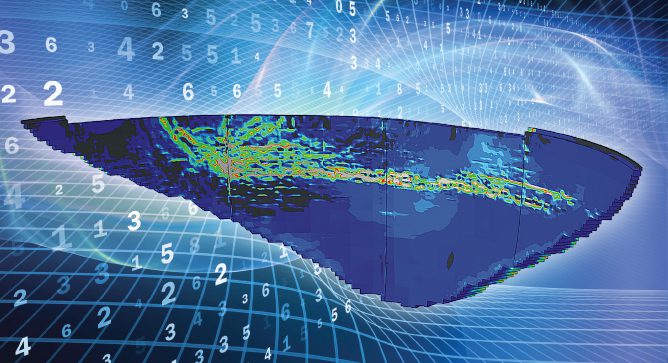News & Views, Volume 43 | Advanced Structural Analysis
By: Eric Kjolsing & Philip Voegtle
 The sophistication of structural analysis has evolved side-by-side with computing and graphics technology. Structural engineers have at their fingertips very powerful software analysis tools that assist them in evaluating very large and complex structures for stability, suitability, and code adequacy. The tools themselves vary in complexity in proportion with the engineering analysis required of them – the most complex and unique engineering problems requiring the most advanced analysis tools. Structural Integrity is a leader in advanced structural analysis (ASA), utilizing state-of-the-art software and material science expertise to solve an array of structural and mechanical problems.
The sophistication of structural analysis has evolved side-by-side with computing and graphics technology. Structural engineers have at their fingertips very powerful software analysis tools that assist them in evaluating very large and complex structures for stability, suitability, and code adequacy. The tools themselves vary in complexity in proportion with the engineering analysis required of them – the most complex and unique engineering problems requiring the most advanced analysis tools. Structural Integrity is a leader in advanced structural analysis (ASA), utilizing state-of-the-art software and material science expertise to solve an array of structural and mechanical problems.
Structural analysis, in its most basic definition, is the prediction of the structural performance of a given structure, system, or component to prescribed loads, displacements, and changes in temperature. Common performance characteristics include material stresses, strains, forces, moments, displacements and support reactions. The results from a structural analysis are typically compared to acceptable values found in design codes. Meeting the design code acceptance criteria ensures a design that protects the public’s health, safety, and welfare.
ASA extends this basic definition of structural analysis to one-of-a-kind problems where the acceptance criteria may not be well defined. Since loads, material behavior, or the structure itself can go beyond the scope of basic design codes, ASA requires an in-depth understanding of modeling techniques, software limitations, and non-linear material behavior. In ASA, sophisticated finite element analysis solvers are utilized to gain a detailed understanding of a system’s non-linear mechanical behavior, providing a full three-dimensional view of the critical stresses and strains in a loaded system.



